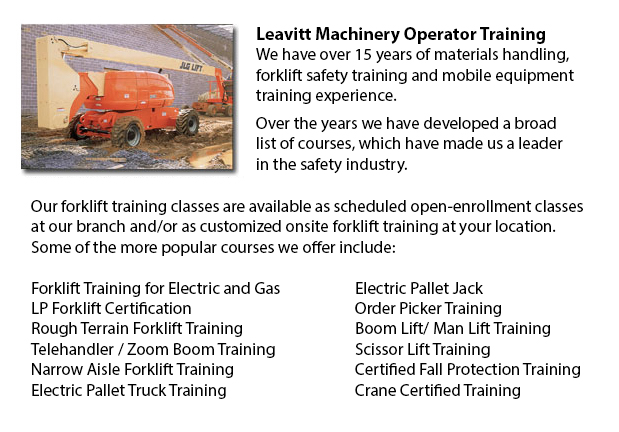
Boom Lift Safey Training Langley - Boom lifts are a kind of elevated work platform or aerial lifting device that are commonly utilized in construction, industry, and warehousing. Boom lifts could be utilized in virtually any surroundings because of their versatility.
Elevated work platforms enable workers to get into work places which would be inaccessible otherwise. There is inherent risk in the operation of these devices. Employees who operate them must be trained in the proper operating procedures. Accident prevention is vital.
The safety factors which are included in using boom lifts are covered in our Boom Lift Training Programs. The course is suitable for people who operate self-propelled elevated work platforms and self-propelled boom supported elevated work platforms. Upon successful completion of the course, Individuals who participated would be given a certificate by a person who is licensed to verify finishing a hands-on assessment.
To be able to help train operators in the safe utilization of elevated work platforms, industry agencies, local and federal regulators, and lift manufacturers all play a role in providing the necessary information and establishing standards. The most important ways to avoid accidents associated to the utilization of elevated work platforms are as follows: checking machines, putting on safety gear and conducting site assessment.
Key safety factors when operating Boom lifts:
Operators stay away from power line, observing the minimum safe approach distance (or also known as MSAD). Voltage could arc across the air to find an easy path to ground.
A telescopic boom should be retracted before lowering a work platform so as to maintain stability when the platform nears the ground.
Boom lift workers must tie off to guarantee their safety. The lanyard and safety tools should be connected to manufacturer provided anchorage, and never to other wires or poles. Tying off may or may not be necessary in scissor lifts, depending on specific local rules, employer guidelines or job risks.
Avoid working on a slope that goes beyond the maximum slope rating as specified by the manufacturer. If the slop exceeds requirements, then the machine must be transported or winched over the slope. A grade can be simply measured by laying a minimum 3-feet long straight edge or board on the slope. Then a carpenter's level could be laid on the straight edge and raising the end until it is level. The per-cent slope is obtained by measuring the distance to the ground (also known as the rise) and dividing the rise by the length of the straight edge. After that multiply by one hundred.
-
Boom Lift Certification Langley
Boom Lift Certification Langley - Making use of elevated work platforms allow for maintenance operations and work to be performed at elevated work heights which were otherwise unreachable. Boom Lift Certification Training educates workers about safel... More -
Boom Lift Training Langley
Boom Lift Training Langley - Elevated work platforms, likewise referred to as aerial platforms, enable workers to carry out tasks at heights which would otherwise be unreachable. There are various types of lifts intended for various site applications... More -
Wheel and Track Loader Training in Langley
Lift trucks are available in a variety of various units that have varying load capacities. The majority of typical lift trucks used in warehouse settings have load capacities of 1-5 tons. Larger scale models are used for heavier loads, like loading s... More -
Counterbalance Forklift License Langley
Counterbalance Forklift License Langley - When operated by completely trained operators, forklifts could become a major advantage for firms and companies. We can offer your employees a thorough training program which consists of all factors of operat... More -
Aerial Lift Ticket Langley
Aerial Lift Ticket Langley - A boom truck is frequently recognized by the cable and telephone company vans that have the elongated arm folded over their roofs. Commonly, a bucket-like apparatus sits at the extension of extendable arms. Often termed a... More -
Aerial Lift Training Langley
Aerial Lift Training Langley - An aerial work platform is a mechanized access platform. This particular device provides access to otherwise not accessible places for equipment or people. Likewise known as an aerial device or elevating work platform,... More -
Wheel Loader Operator Training Langley
Wheel Loader Operator Training Langley - To be able to raise considerable weights, industrial cranes utilize pulleys and levers. In the past, Romans utilized cranes to construct huge monuments making the origin of these equipment at least two thousan... More -
Manlift Safety Training Langley
Manlift Safety Training Langley - It is important for competent Manlift operators to be aware of the connected dangers which come with particular kinds of scissor lifts. They must be able to operate the scissor lift in a way that protects not just th... More

Forklift Training Langley
TOLL FREE: 1-888-254-6157
Langley, British Columbia
forklifttraininglangley.com
Email Us
About Us


